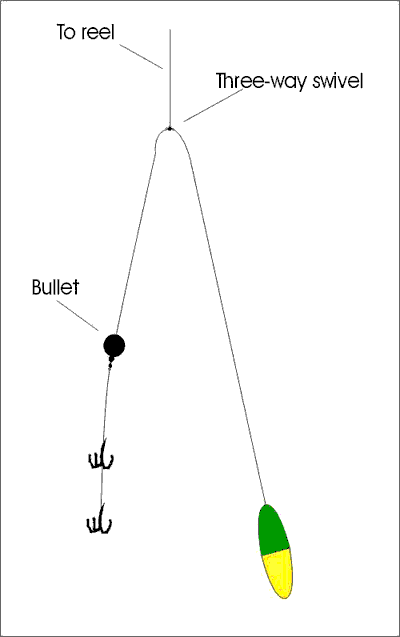It also occurs to me that, on a windy day, a rig like this would take almost all the line under the surface, out of the way. Though he doesn’t mention it, Buller’s rig also offers the advantage that the strike is more direct, with less slack line to recover from the angle formed by hook, float and rod tip, if you see what I mean. And of course, the rig allows a bloke with a ten-foot rod to fish in 20 feet of water, as it were. I see no reason why the three-way swivel shouldn’t be replaced with a micro-swivel, the reel line and float tag both attached to the ‘top’ eyelet. Even a good three-way knot might be okay for light float rigs. Buller describes holding the float lightly as you cast until the weight takes it from his fingertips; so much for being able to fish lighter, as he suggests! He also describes using it as a rig to anchor floating crust, which replaces the float. Shot or a bomb goes on the other end of the cast. I haven’t tested this rig myself, so I’ve no idea if it’s prone to tangling during the cast. I suspect that it’s like many float rigs; OK when it’s ‘balanced’ properly. It’s lodged in my mind, though, for the day when it may answer my prayers…. | ||
|
Welcome!Log into your account











